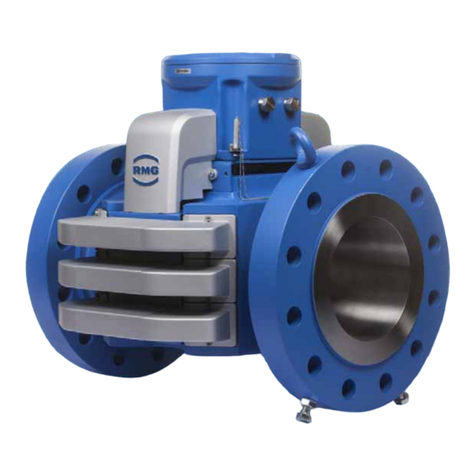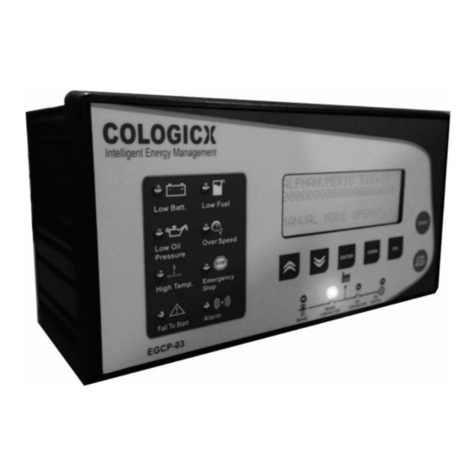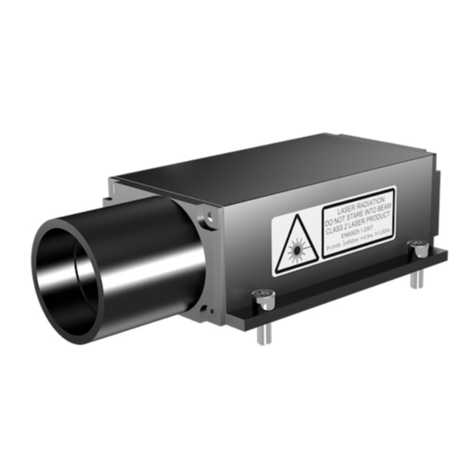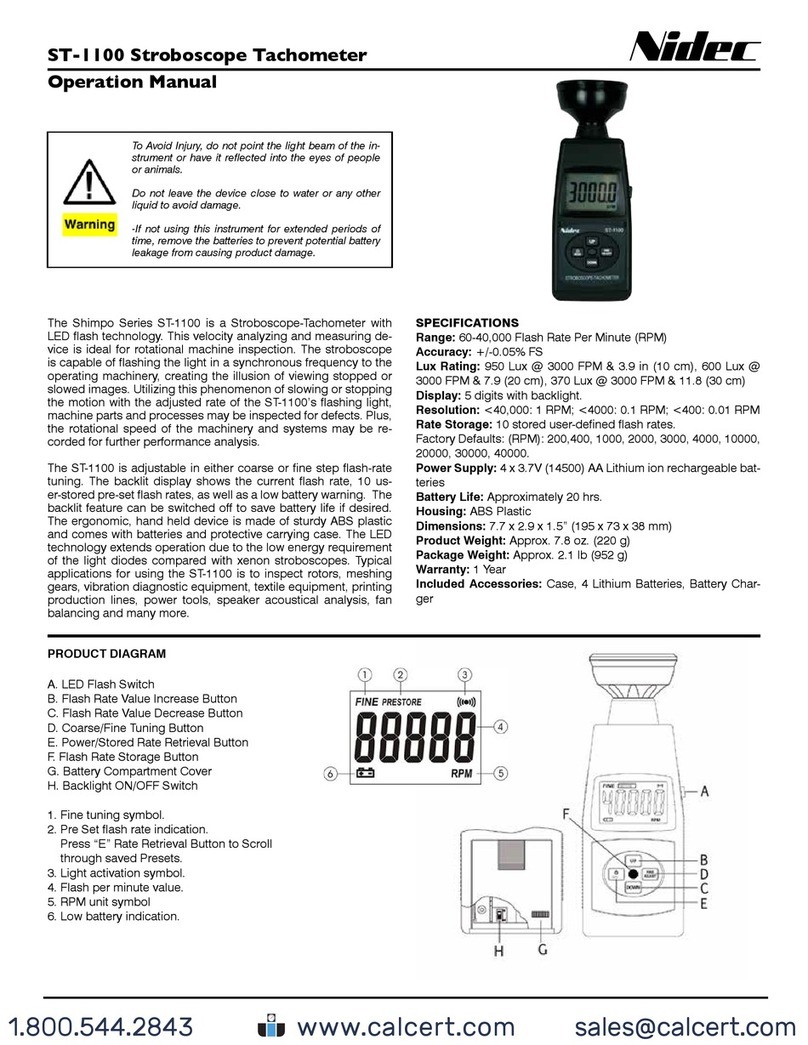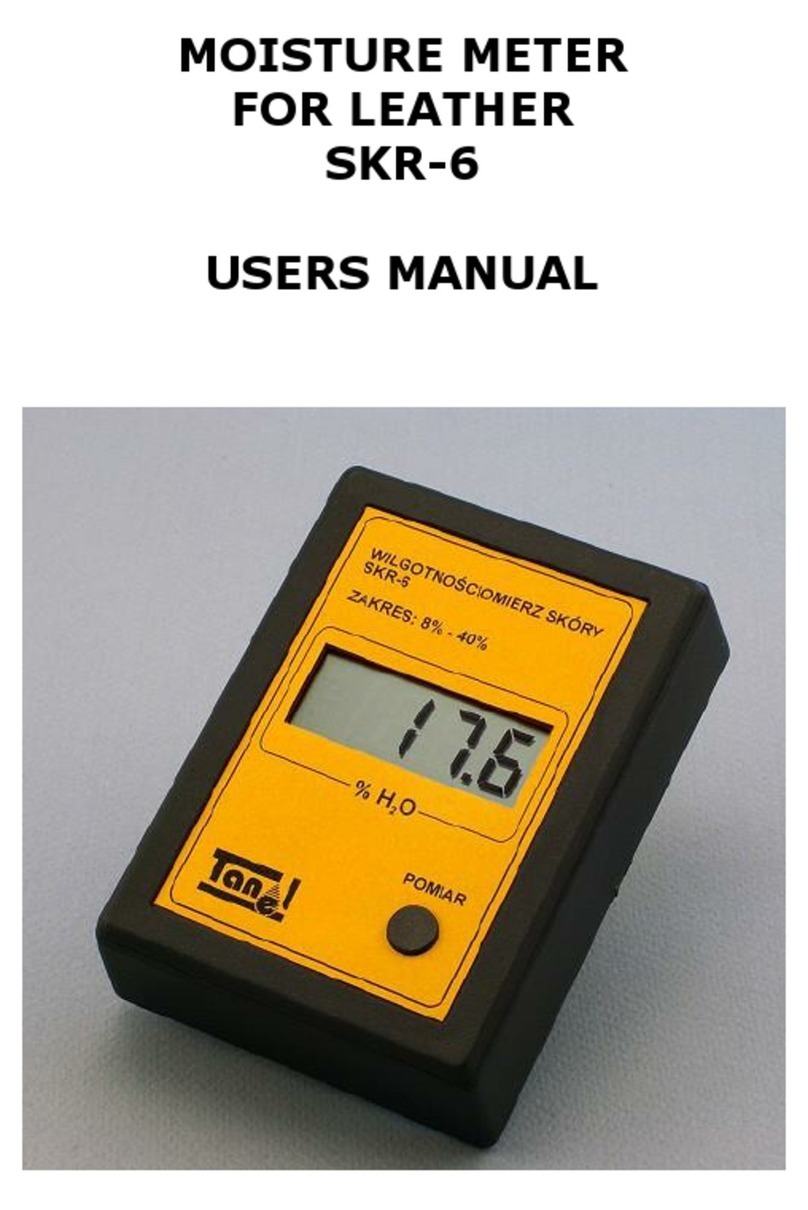TriField TF2 User manual

v1.0.1
March 2018
© 2018 AlphaLab, Inc. All rights reserved.
TriField EMF Meter
Owner’s Manual

TABLE OF CONTENTS
Overview .......................................................................................... 1
Introduction ................................................................................ 1
Features....................................................................................... 1
Applications................................................................................. 1
Using the TriField EMF Meter ........................................................ 2
Reading the LCD ......................................................................... 3
AC Magnetic Field Detection ..................................................... 3
AC Electric Field Detection......................................................... 4
RF and Microwave Field Detection........................................... 5
The Standard and Weighted Modes ........................................ 5
EMF Exposure Limits ...................................................................... 6
Typical Home and Oce EMF Levels ....................................... 6
Specications................................................................................... 7
Warranty .......................................................................................... 8
Technical Support and Service...................................................... 8
Disclaimer ........................................................................................ 8

OVERVIEW
Introduction
The TriField® EMF Meter is an AC gaussmeter, AC electric eld meter, and radio power density
meter in a single unit, that combines all the features needed for fast, accurate measurements
of electromagnetic elds (EMF). In addition to standard AC measurement modes, a special
frequency weighted mode will properly scale the magnetic and electric measurements to
indicate the full magnitude of currents produced by each type of eld inside the human body.
Features
• Detects all three types of EMF pollution: AC magnetic, AC electric, and RF/microwave
• Special frequency weighting mode for measuring electric current from EMF in the human body
• AC Magnetic Mode covers 40 Hz - 100 kHz with range of 0.1 - 100.0 milligauss (mG)
• AC Electric Mode covers 40 Hz - 100 kHz with range of 1 - 1000 volts per meter (V/m)
• RF Mode covers 20 MHz - 6 GHz with range of 0.001 - 19.999 milliwatts per square meter (mW/m2)
• AC magnetic measurements are 3-axis, allowing for quick readings, regardless of meter orientation
• Large liquid-crystal display (LCD) for crystal clear, accurate readings
• Adjustable backlight for use in low-light environments
• Audio Indicator emits sound that helps to pinpoint EMF sources
• Peak Hold captures fast pulses, for measuring fast digital signals
• Operates for more than 20 hours on a 9V battery, with a low battery indicator
Applications
• Mobile phone and cell tower RF radiation
• Smart meter RF radiation
• Wi-Fi router and Bluetooth RF radiation
• Overhead AC power line and transformer EMF emissions
• Laptop, refrigerator, circuit breaker box, etc. appliance EMF emission
• EMF emission inside aircraft and motor vehicles
• Microwave oven leak
• Location and EMF of wiring in walls
• EMF from plumbing pipes used as grounding
1

USING THE TRIFIELD EMF METER
1. Hold the meter as shown.
Note: Please do not cover the sensors at the top of the meter with your hand or other objects.
2. The knob is used to switch between measurement modes and to turn the meter o when not in use.
3. For measuring the eect of EMF on the human body (or any conductive body), use the dark blue
Weighted modes. For direct measurement of eld strength, use the light blue Standard modes. The
red RF mode can be used for any radio or microwave measuring purpose.
4. The display shows the Field Measurement number and the units at the bottom of the screen. The
Peak Measurement number is shown at the top left next to the peak icon .
5. To turn on the Audio Indicator, rst remove the battery cover by sliding it downward. Press the audio
button . Press the audio button again to turn the audio o.
6. To turn on the backlight, rst remove the battery cover by sliding it downward. Press the backlight
button until the desired brightness is reached.
7. When the battery life indicator at the top right shows only 1 bar remaining, it’s time to replace
the battery. Remove the battery cover by sliding it downward and tap the battery compartment on
the palm of your hand so the battery falls out. Replace with a 9V alkaline battery as shown.
2

Reading the LCD
The Field Measurement shows the numerical measurement and units, at the bottom of the
LCD. The Field Measurement is averaged to give the most stable, accurate reading possible. The
Field Percentage Indicator shows a circular bar graph of the percentage of maximum range that
corresponds to the Field Measurement, on a logarithmic scale. The Field Percentage Indicator
has a scale that shows tick marks for 0, 10, 20, 50 and 100 percent of maximum range. The Field
Percentage Indicator is shown above the Field Measurement, in the middle of the LCD.
The Peak Measurement captures the highest peak that has been measured and holds that value
for 3 seconds or until a higher peak is measured. The Peak Measurement can capture peaks
every 12 milliseconds (ms). The Peak Measurement will be shown numerically at the top left of
the LCD, next to the peak icon . The Peak Percentage Indicator shows a circular arc graph
of the percentage of maximum range that corresponds to the Peak Measurement. The Peak
Percentage Indicator uses the same scale as the Field Percentage Indicator and is shown above
the Field Measurement Indicator.
When turning the meter on, please allow 1.5 seconds for the reading to stabilize.
AC Magnetic Field Detection
To measure the 60 Hz-equivalent eect of an AC magnetic eld on the human body, turn
the knob to the Weighted MAG setting and hold the meter at whatever location you want to
measure. For standard technical AC magnetic eld measurement, turn the knob to the Standard
MAG setting.
The orientation of the meter does not matter while in the magnetic modes, because all 3 axes
are combined. Your body and hand do not shield the magnetic eld and do not interfere with
the measurement.
3

The AC Magnetic Mode uses three ferrite-core coils, pointing in the X, Y, and Z directions, located
near the top of the meter. The X, Y and Z signals are combined into a true magnitude of the
eld strength, independent of which direction the meter is pointed. Maximum range is 100.0
mG, with resolution of 0.1 mG, and accuracy of ±4% of reading at 50 Hz and 60 Hz. A frequency
response graph of Standard and Weighted modes is on page 7.
In most homes or oces, some areas are “hot” spots with high readings. Most often, this is
caused by magnetic elds, which come largely from unpaired internal wiring. Contrary to
popular belief, power transmission lines and transformers do not generally contribute as
much magnetic eld indoors as does internal wiring. This is because high voltage lines carry
relatively low current, and transformers are shielded. Other magnetic sources include video
displays, uorescent lights, light dimmers, transformers that are inside consumer devices,
electric blankets, heaters, and anything with a motor. Much of the total eld strength is from
frequencies that are harmonics or multiples of 60 Hz (120 Hz, 180 Hz, etc.). Cars (especially near
the front oorboard) and motorcycles have fairly strong elds at frequencies higher than 60 Hz.
AC Electric Field Detection
To measure the eect of an AC electric eld on the human body, turn the knob to the Weighted
ELEC setting and hold the meter at the location to be measured. For standard technical AC
electric eld measurement, turn the knob to the Standard ELEC setting.
Your body can easily shield electric elds; the reading is lower if you cover the top surface of the
meter with your hand. Also, the presence of your hand at the back of the meter compresses the
electric eld, making it read somewhat higher than if the meter were suspended from a string
or held on a board, away from you. In either case, the true electric eld near the meter will be
displayed.
The AC Electric Mode uses a metal plate sensor under the top of the meter. Circuitry similar to
the magnetic section converts the signals into an electric eld strength. Maximum range is 1000
V/m with resolution of 1 V/m and accuracy of ±5% of reading at 50 Hz and 60 Hz. A frequency
response graph of Standard and Weighted modes is on page 7.
A few areas in most homes read high on the electric eld setting. These include areas near
improperly grounded equipment, the front of video displays, and uorescent lights.
4

RF and Microwave Field Detection
To measure an RF eld, turn the knob to the RF setting and point the top of the meter at the
potential source, or simply hold the meter vertically.
Generally, your hand can shield the RF signals, so grip the meter as shown on page 2.
The RF Mode uses the same plate sensor as the AC Electric Mode. The signal is amplied
and converted to a power density magnitude, calibrated at a frequency of 1 GHz (1000 MHz).
Maximum range is 19.999 mW/m2with resolution of 0.001 mW/m2 and accuracy of ±20% of
reading at 1 GHz. A frequency response graph of the RF mode is on page 7.
When reading RF emitted by digital devices, such as mobile phones and smart meters, the Peak
Measurement (small numerals in the upper-left of the display) is of more interest than the
Field Measurement (large numerals at the bottom). The information from digital RF devices is
transmitted in brief packets that occur irregularly (perhaps once per minute with smart meters
and several times per second with Wi-Fi transmitters or mobile phones that are in use). The
Peak Measurement detects these packets and displays the strongest packet for several
seconds before resetting itself.
RF and microwaves are composed of a particular combination of electric elds and magnetic
elds that is self-sustaining. For frequencies below about 100 MHz the principle eect on
a conducting body is from the magnetic eld part only. This is because the electric eld
component of radio waves produces much weaker currents in the body than does the magnetic
eld unless the wavelength of the waves is smaller than the height of the body. Low-frequency
electric elds by themselves can be strong enough to create signicant current, but only if they
are from sources other than true radio waves.
The Standard and Weighted Modes
The light blue Standard modes for AC magnetic elds (MAG) and AC electric elds (ELEC) will
measure elds using a at frequency response. That is, all frequencies from 40 Hz to 100 kHz
(100,000 Hz) are measured with equal sensitivity. The dark blue Weighted modes for magnetic
and electric elds measure 60 Hz elds with the same sensitivity as the Standard mode.
However, the Weighted modes are more sensitive at frequencies higher than 60 Hz, and from 60
Hz to 500 Hz, sensitivity increases proportional to frequency. That is, 1 milligauss (mG) at 60 Hz
will read “1.0” on the display, whereas 1 mG at 120 Hz will read “2.0”. See the frequency response
curves on page 7 for more detail. On Weighted modes, the Field Measurement shows a number
proportional to the average electric current induced inside the human body from the elds,
and the number is equivalent to the amount of 60 Hz magnetic or electric eld that would be
5

required to induce that much current. However, biological reactions generally occur at speeds
that are slower than 1000 Hz, so on Weighted modes, the meter is designed to become less and
less sensitive at frequencies above 1000 Hz.
EMF EXPOSURE LIMITS
Many dierent EMF exposure limit standards have been published. Below is a table of some of
the published national and international standards. There are many variables that determine
the basis of these standards, including: EMF frequency, length of exposure, and aected body
part(s). One thing to note is that the IEEE and most Western European limits are based on the
thermal impact of EMF on the human body, whereas the Russian and Eastern European limits
focus more on dose over extended exposure periods. For more detail, the sources are listed
below.
Mains Electricity ( 50 Hz or 60 Hz) 2000 MHz (2 GHz)
Magnetic (mG) Electric (V/m) RF (mW/m2)
Russia1100 500 100
China2833 3333 400
ICNIRP3,4 2000 4167 10,000
IEEE5,6 9040 5000 10,000
[1] SanPiN 2.1.2.1002-00, Sanitary and epidemiological requirements for residential buildings and premises
[2] GB 8702-2014, Controlling limits for electromagnetic environment
[3] ICNIRP GUIDELINES FOR LIMITING EXPOSURE TO TIME-VARYING ELECTRIC AND MAGNETIC FIELDS (1HZ - 100 kHZ)
[4] ICNIRP GUIDELINES FOR LIMITING EXPOSURE TO TIME-VARYING ELECTRIC, MAGNETIC AND ELECTROMAGNETIC FIELDS (UP TO 300 GHZ)
[5] IEEE Std C95.6™-2002, IEEE Standard for Safety Levels with Respect to Human Exposure to Electromagnetic Fields, 0-3 kHz
[6] IEEE Std C95.1™-2005, IEEE Standard for Safety Levels with Respect to Human Exposure to Radio Frequency Electromagnetic Fields, 3 kHz to 300 GHz
Typical Home and Oce EMF Levels
The maximum exposure limits shown above are much higher than levels you would typically
encounter. Some authorities recommend much lower levels for long-term exposure, but as
yet there is no consensus on safe levels. Generally, when measuring homes or oces, only the
actual areas where people spend time (or where EMF-sensitive equipment is to be located) are
important. In the middle of a typical home or oce, magnetic eld is usually less than 5.0 mG,
electric eld is usually less than 20 V/m, and RF is usually less than 5.000 mW/m2.
6

SPECIFICATIONS
Function TriField®EMF Meter
AC Magnetic 3 - axis
Frequency Range 40 Hz - 100 kHz
Accuracy ±4% @ 50/60 Hz
Maximum Range 100.0 mG
Resolution 0.1 mG
Frequency Response See plot below
AC Electric 1 - axis
Frequency Range 40 Hz - 100 kHz
Accuracy ±5% @ 50/60 Hz
Maximum Range 1000 V/m
Resolution 1 V/m
Frequency Response See plot below
RF/Microwave 1 - axis
Frequency Range 20 MHz - 6 GHz
Accuracy ±20% @ 1 GHz
Maximum Range 19.999 mW/m2
Resolution 0.001 mW/m2
Frequency Response See plot below
Battery 9V alkaline battery
Battery Life Backlight O > 20 hrs
Battery Life Backlight On > 12 hrs
Frequency Response
AC Magnetic AC Electric RF/Microwave
7

WARRANTY
We at AlphaLab, Inc. are very proud of our products and back each one we sell with the following
warranty:
AlphaLab, Inc. warrants this product, when purchased from AlphaLab, Inc. or an authorized
AlphaLab, Inc. dealer, to be free from defects in materials and workmanship under normal use
and service. This warranty is valid to the original purchaser only and is non-transferable.
AlphaLab, Inc.’s liability under this warranty is limited to repairing or replacing defective
materials that show evidence of defect, provided the product is returned to AlphaLab, Inc. where
all parts and labor will be covered up to a period of one year.
The consumer forfeits the benets of this warranty if the product’s main assembly is opened and
tampered with by anyone other than an authorized AlphaLab, Inc. technician.
The foregoing is in lieu of all other warranties, expressed or implied, and AlphaLab, Inc. neither
assumes nor authorizes any person to assume any obligation or liability in connection with
the sale of this product. In no event shall AlphaLab, Inc. or its dealers be liable for special or
consequential damages or from any delay in the performance of this warranty due to causes
beyond their control.
TECHNICAL SUPPORT AND SERVICE
If you require support, please visit www.trield.com/support or send an email to
support@trield.com. Be prepared to describe the problem accurately. Before you return a
product to the factory for service, we recommend you refer to this manual. Make sure you have
correctly followed the operating procedures. Please refer to the Warranty information, which
extends to the rst end-user. After expiration of the warranty, a reasonable charge may be
made for parts, labor, and shipping if you choose to use the factory service facility. In all cases,
you are responsible for transportation charges to the factory. If a product is still under warranty,
AlphaLab, Inc. will pay the return shipping.
DISCLAIMER
Use of the meter is solely at the user’s discretion to identify exposure to non-ionizing electromagnetism.
Because a meter of this type may malfunction, the user’s responsibility is to determine if the meter is
working properly, by using it to measure a known reference. Manufacturer or dealer cannot assume
responsibility for damages resulting either from a defective meter (except to replace or repair said meter
within the warranty period) or from inaccuracies in the present body of knowledge concerning potential
health hazards of electromagnetism. The meter should be used so that simple steps (such as moving
furniture) can be taken to reduce relative exposure within a home or oce. If more drastic actions are
contemplated, consult expert advice, and perform independent tests with another type of meter.
8
Table of contents
Popular Measuring Instrument manuals by other brands
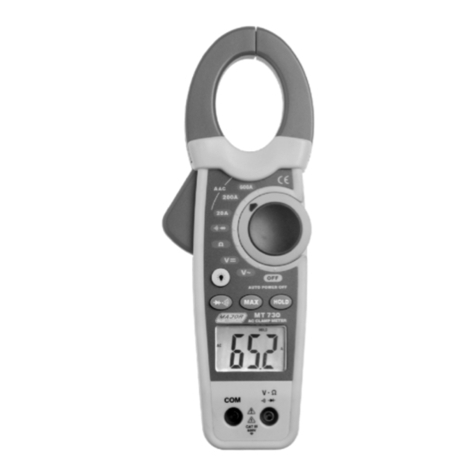
Major
Major MT 730 instruction manual
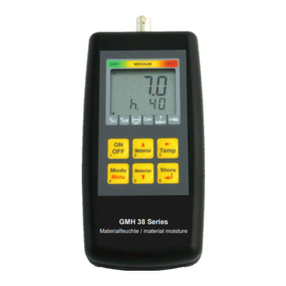
GREISINGER
GREISINGER GMH 3830 operating manual
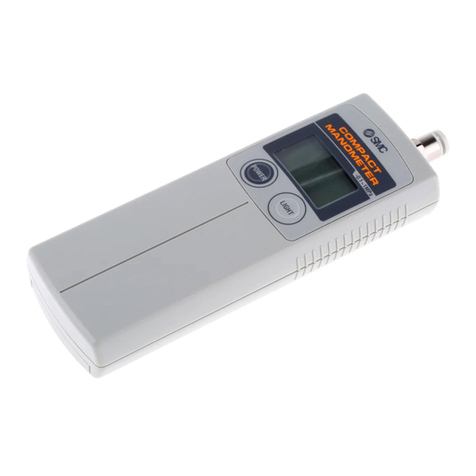
SMC Networks
SMC Networks PPA100 Series instruction manual
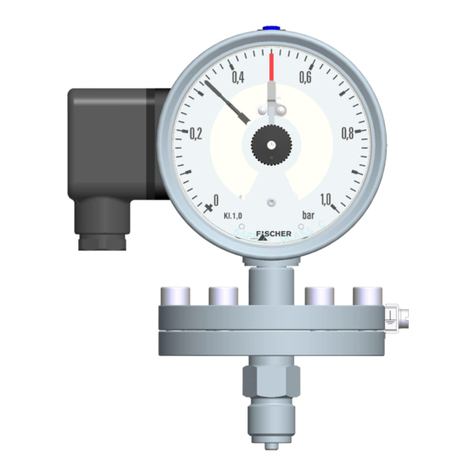
FISCHER
FISCHER MA15F ... A Series Operation manual

Emerson
Emerson Rosemount 9295 quick start guide
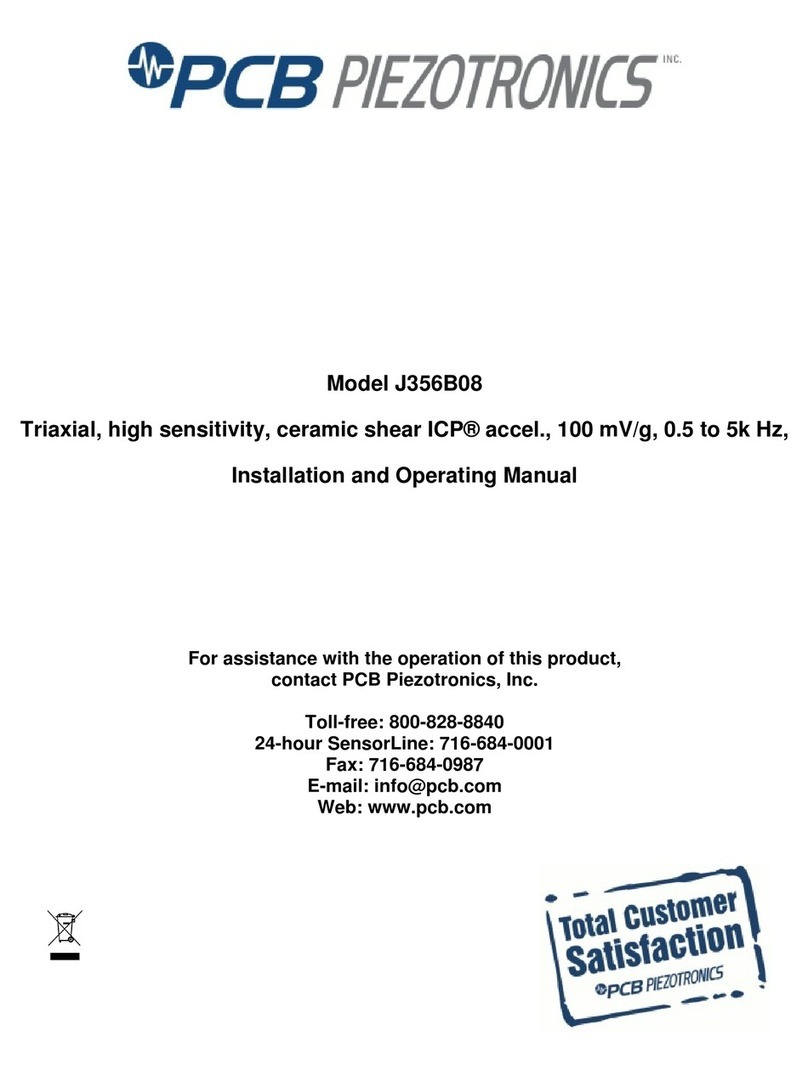
PCB Piezotronics
PCB Piezotronics J356B08 Installation and operating manual


